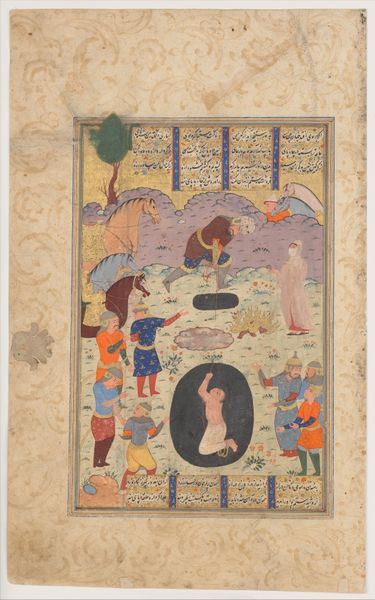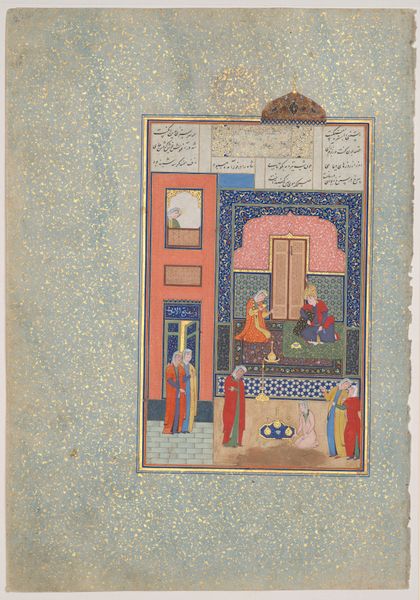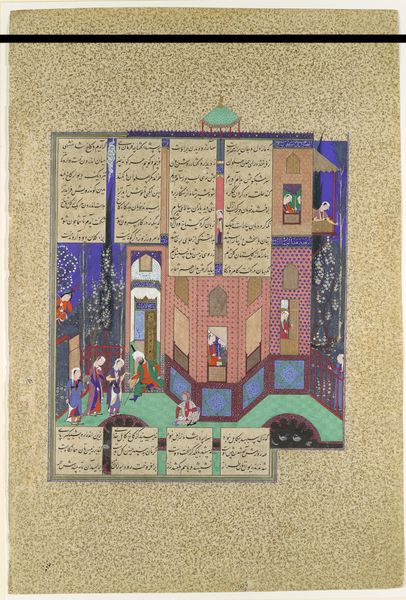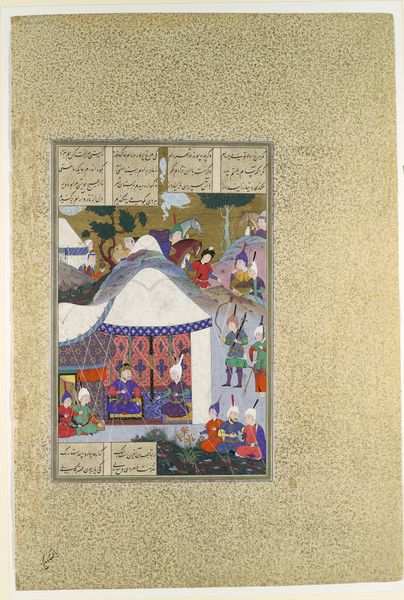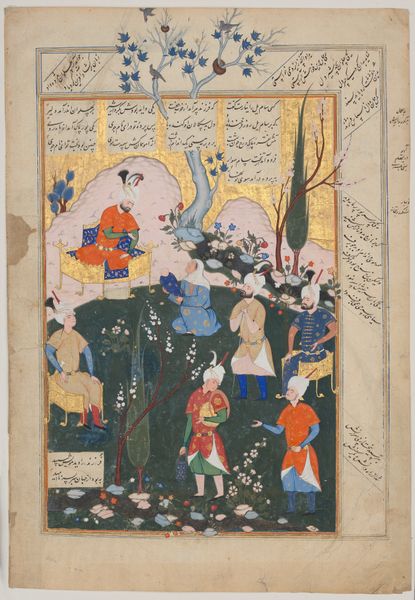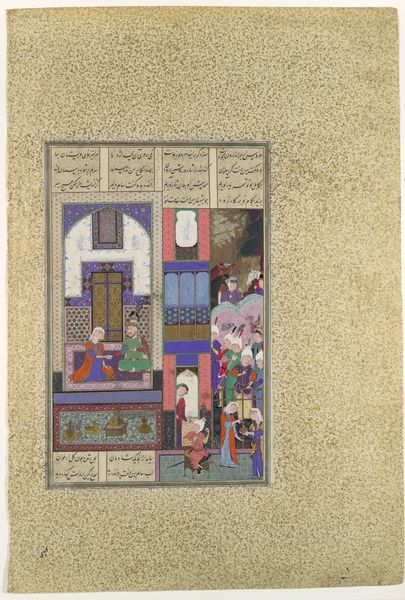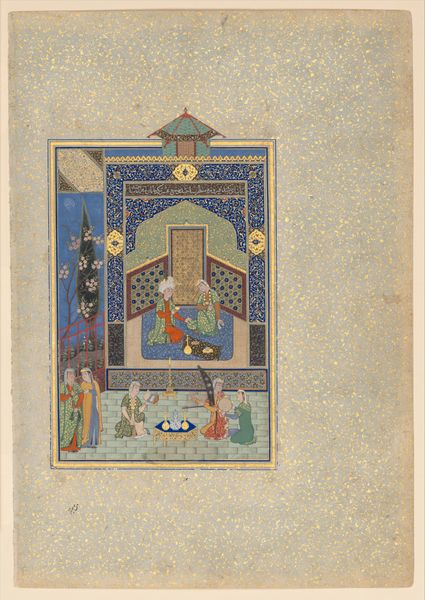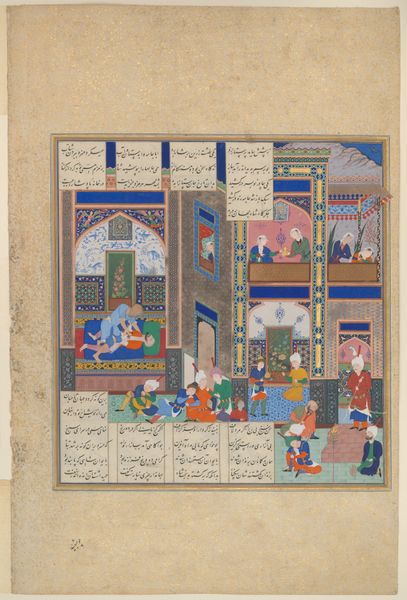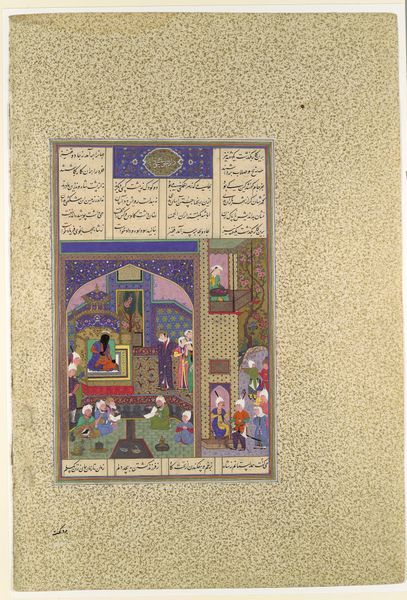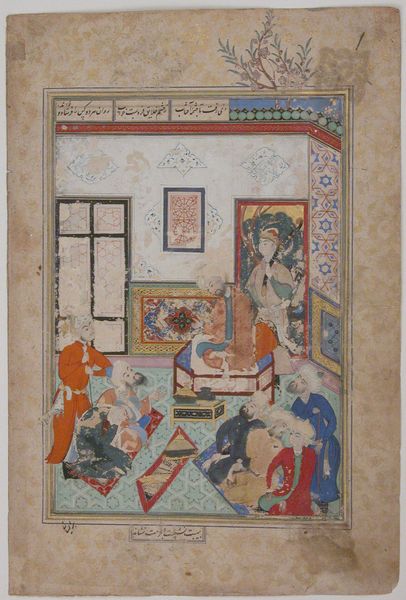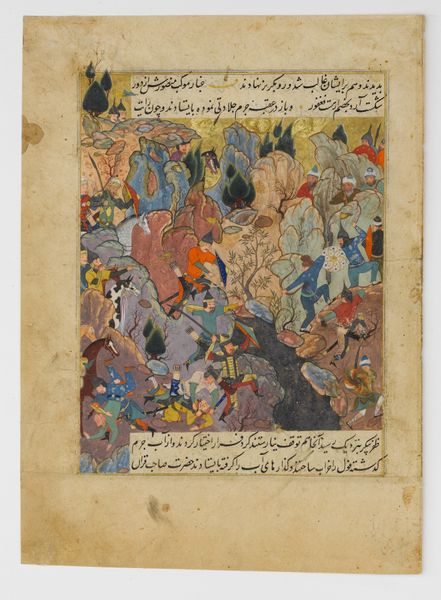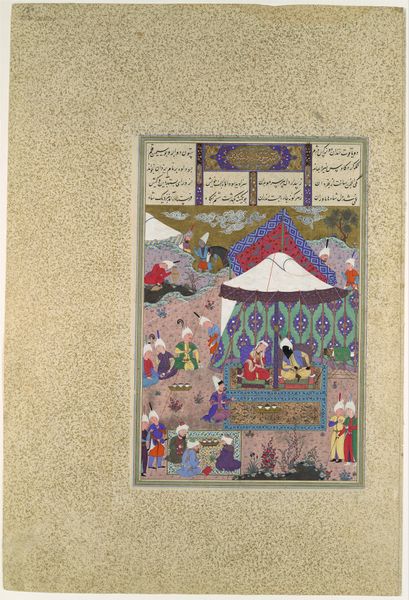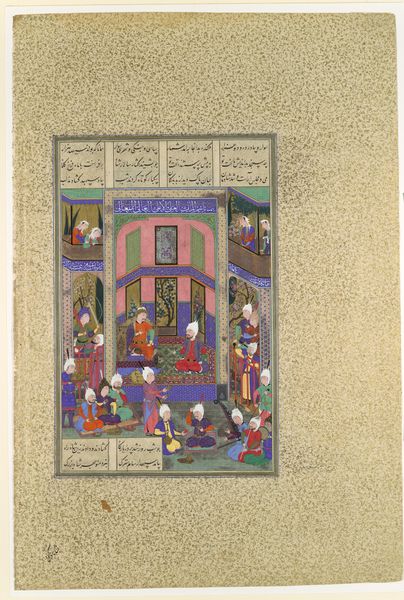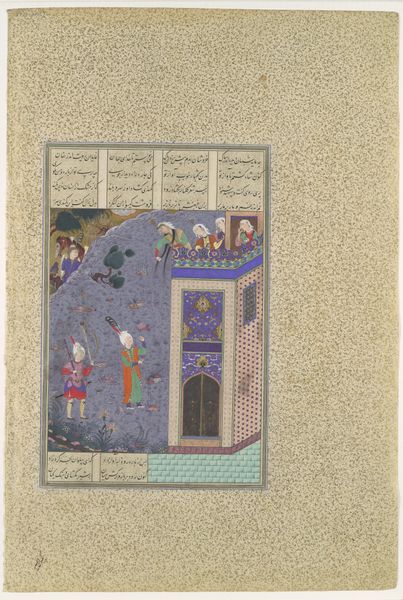
"The Eavesdropper", Folio 47r from a Haft Paikar (Seven Portraits) of the Khamsa (Quintet) of Nizami of Ganja 1405 - 1455
0:00
0:00
painting, watercolor
#
water colours
#
narrative-art
#
painting
#
figuration
#
watercolor
#
men
#
islamic-art
#
genre-painting
#
musical-instrument
#
miniature
Dimensions: Painting: H. 8 7/8 in. (22.5 cm) W. 4 7/8 in. (12.4 cm) Page: H. 11 in. (27.9 cm) W. 7 3/16 in. (18.3 cm) Mat: H. 19 1/4 in. (48.9 cm) W. 14 1/4 in. (36.2 cm)
Copyright: Public Domain
Curator: This lively composition, created between 1405 and 1455, is "The Eavesdropper," folio 47r from a Haft Paikar, part of the Khamsa of Nizami of Ganja. It's rendered in watercolors, a superb example of Persian miniature painting. Editor: Immediately striking! There’s so much going on. The dark pool contrasts wildly with the bright architectural setting above. It’s as if two different worlds are forced together on a single plane. Curator: Absolutely. The placement of architectural elements juxtaposed against figures in water represents an embrace of life's sensual pleasures alongside intellectual curiosity in the Islamic world. Water, within this image, holds symbolic resonance as the element that has the power to purify. Editor: I see it. The balcony setting certainly brings to mind shared social rituals and cultural expression through artistic form. It gives insight into leisure, maybe, as a social theater. How did public attitudes shape this piece's creation and interpretation, do you think? Curator: Genre painting such as this became hugely popular within royal circles—this image embodies that culture with its illustration of storytelling. This piece has a function—it preserves shared mythologies in a highly personalized, emotional format. Look closer and observe that most figures direct their gaze inward: perhaps that has implications as to how the piece asks viewers to understand their emotions too? Editor: It’s a bold choice, to frame that inner world quite so explicitly with themes of the everyday. By grounding philosophical concepts, the painting allows its intended audience to access new understandings and maybe even re-evaluate established social hierarchies. Curator: Precisely. Through careful consideration of symbols such as color, setting and perspective we have the ability to perceive emotional undercurrents from centuries before us. Editor: Ultimately, what stands out to me is the painting's engagement with social rituals—revealing a tapestry woven through centuries. Curator: And to me, it demonstrates the timeless emotional currents that unify human expression through visual symbols, and how narrative can distill experience into profound cultural memory.
Comments
No comments
Be the first to comment and join the conversation on the ultimate creative platform.
